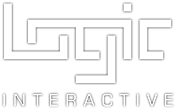KARBONFANGST OG LAGRING
VilVite, Bergen | 2024
Karbonfangst-installasjonen lar brukerne utforske et naturgassanlegg og teste ulike type karbonfangst teknologier: oxyfuel og aminer. Installasjonen består av et langt bord med et felt som representerer naturgassanlegget. Dette feltet viser et forløp som går fra naturgassreservoaret til et brennkamer, videre til en gassturbin og EL generator som gir elektrisitet til byen, og videre til enten et skorstein hvor eksos vises frem eller til et CO2-lagringsreservoar. Forløpet har fysiske rør som lyses opp mens gassen beveger seg gjennom anlegget. Brukerne må vri et par ventiler og dirigere gassen i anlegget riktig vei.
Installasjonen er lekert og taktil, og gjennom lys, lyd, grafikk og info-tekster på storskjermen skal man se forskjellen mellom de to ulike karbonfangstmetodene, og sammenlingne de med "default" modus som kjører uten karbonfangstteknologien.
Lagring-installasjonen viser publikum at CO2-lagring I havbunnen er trygt. Dette gjøres gjennom et spill som fokuserer på å utforske ulike type bergarter og deres egenskaper, til å se hvordan disse dannes et reservoar som man utforsker for å finne ut om det er godt egnet til å lagre CO2.
The carbon capture installation allows users to explore a natural gas plant and test different types of carbon capture technologies: oxyfuel and amines. The installation consists of a long table with a field representing the natural gas plant. This field shows a course that goes from the natural gas reservoir to a combustion chamber, on to a gas turbine and electric generator that provides electricity to the city, and on to either a chimney where exhaust fumes are displayed or to a CO2 storage reservoir. The pipeline has physical pipes that are lit up as the gas moves through the plant. Users have to turn a couple of valves and direct the gas in the system in the right direction.
The installation is playful and tactile, and through light, sound, graphics and info-texts on the big screen, the audience can see the difference between the two different carbon capture methods, and compare them with the "default" mode that runs without the carbon capture technology.
The storage installation shows the public that CO2 storage in the seabed is safe. This is done through a game that focuses on exploring different types of rocks and their properties, to see how these form a reservoir that is explored to find out if it is well suited to store CO2.













